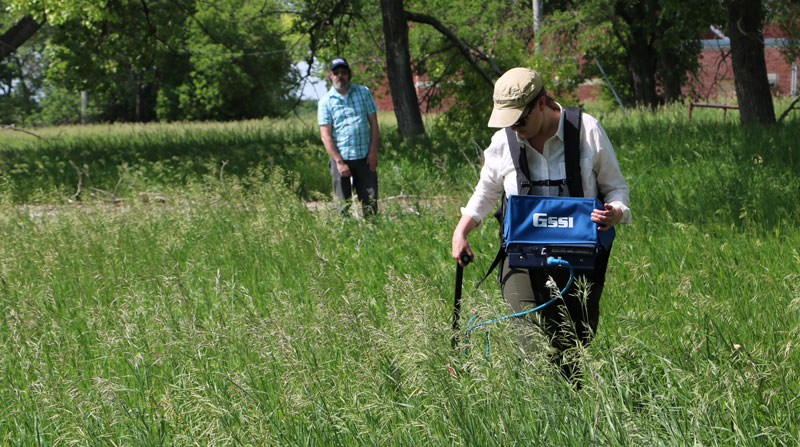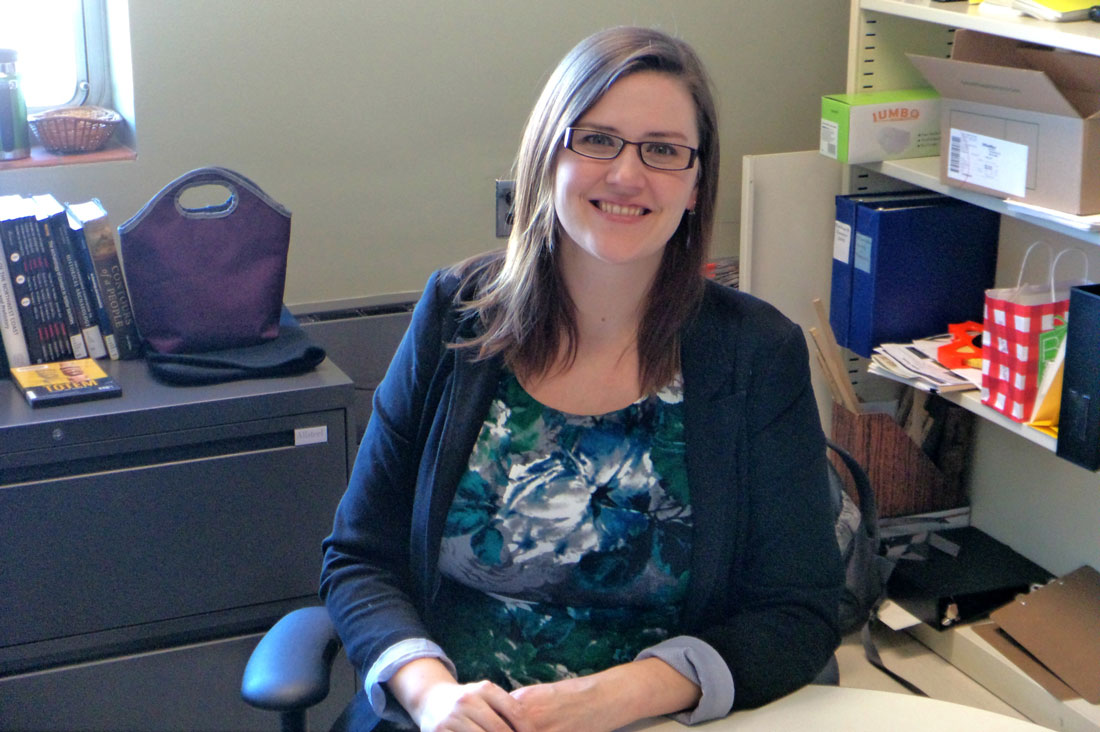
Anthropologist Kisha Supernant named new director of the Institute of Prairie and Indigenous Archaeology (PHOTO: supplied)
When Kisha Supernant holds an item of personal belonging - a bead, perhaps, or some other type of ornament unearthed from a northern Alberta Métis settlement, it's extraordinarily resonant. For the Métis anthropologist, these items are not just century old archaeological artifacts, but potentially something that could have belonged to one of her ancestors.
"In Indigenous communities, many of us have been disconnected, and there are a lot of ways to find our way back," she says. "Holding those belongings and engaging with those materials - it can be very powerful, and a way to bring us home, back to our communities."
A deeper engagement with these communities is what Supernant hopes to bring to her role as the new director of the Institute of Prairie Archaeology - which will now be known as the Institute of Prairie and Indigenous Archaeology to reflect its broader scope.
Indigenous archaeology, as an approach, is a specific set of scholarship that engages Indigenous ways of knowing and being within archaeological practice, explains Supernant. Building on an already impressive body of work in this area, the Institute of Prairie and Indigenous Archaeology will be in practice and now in name, a clear demonstration of its deep and sustained commitment to building the partnerships, relationships and responsibilities outlined in the Truth and Reconciliation Commissions' Calls to Action.
"It's doing research for, by, and with Indigenous communities as opposed to on these communities," says Supernant. "There is a growing global approach to archaeology around Indigenous archaeology and the ways it's changing established practices - not just in Western Canada and the United States but around the world. I want to tie us in to some of these broader conversations of what Indigenous archaeology means for the future of our discipline."
Supernant had worked with the Institute for a number of years, with the Faculty of Arts and former IPA directorJack Ives, who established the Institute in 2008 to pursue research initiatives and provide leadership in the training of archaeologists through field schools in the northern Plains region of Western Canada and the United States. Supernant's extensive work with Métis communities on the prairies will not build on the research strength of the Institute, over the next five years its mandate will expand to include pedagogy and policy work.
"Research will remain a very strong strand, but I want to weave in these two additional threads, which I liken it to a braid of sweetgrass," explains Supernant. "Bring in more students and thinking about the ways in which we teach archaeology and heritage management. Our Indigenous students in an Indigenous archeology class had an opportunity to imagine what it would be to be both an Indigenous person and an archaeologist, whereas up to that point it had been difficult to navigate between what are often very different approaches to understanding the past."

Kisha Supernant
Supernant says providing learning environments that is attentive to Indigenous students' own ways of knowing and being is an important piece of the pedagogical work, adding that it also benefits the non-Indigenous students who are exposed to a different way of archaeological practice.
"I want to help students do archaeology that really matters - not just to them, not just to a research community, but to the Indigenous communities as well."
Supernant is equally intent on building a strong heritage policy management structure and will work with Indigenous representatives as well as University of Alberta policy experts in Political Science and Law over the next five years to increase capacity in this area. This interest stems from what she identifies as a gap in heritage management policy in Canada. Provincial bodies and laws govern heritage resources in this country, but First Nations reserves are on crown land and therefore federally managed.
"I can do the research and I can train a lot of archaeologists, but the whole question of how development is done and how heritage is managed is the bulk of archaeology that gets done in Canada," says Supernant. "What role can heritage policy play in changing practice and in giving First Nations communities in particular but also Métis communities, different sorts of ability to make decisions about their own heritage? If we want to change some of those practices, then we need to think about the role that policy can play."
Over the next five years, Supernant will look for opportunities to build the IPIA's community to a national and international network of scholars committed to this new approach to archaeology.
"Archaeology is a powerful tool," says Supernant. "The land itself and the materials that are the belongings of ancient peoples of these lands, tell a story that often doesn't make it into the archive. I really want our work to tell the stories, and to support those communities - First Nations, Metis and Inuit - to tell the stories of this land that don't otherwise get told, or that archaeologists only tell."